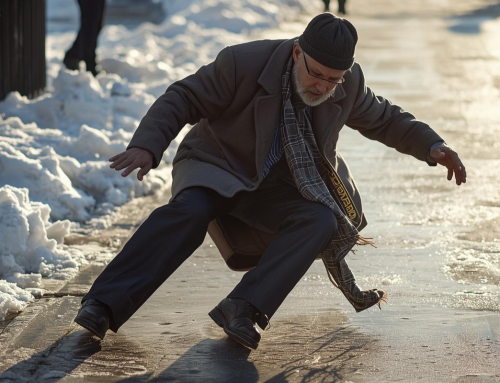A slow fracture recovery can feel disorienting. Your energy dips. Your motivation fades. And somewhere between the pain management, follow-up appointments, and “just give it time,” you start to wonder: Why isn’t this getting better? What else can I do to help this heal?
These are valid questions… especially when healing takes longer than expected.
Some bones heal quickly. Others take more time, especially if you’re dealing with a complicated or non-union fracture. This guide is for anyone in that slower lane: still waiting for progress, even after doing everything right.

Whether you're navigating delayed healing or just trying to stay hopeful week after week, this article will help you regain perspective, learn to track meaningful progress, and take small, empowering actions to support your recovery.
TL;DR
Recovering from a fracture that’s healing slowly can be emotionally and physically draining, but you’re not powerless. This guide offers practical ways to stay motivated, including how to spot meaningful progress, set achievable short-term goals, lean on a support system, and explore bone stimulation therapy (LIPUS) as a proactive treatment option when traditional healing stalls.
Why Recovery Can Feel Like It’s Stalling
Fracture healing isn’t always linear. Some days you might notice less pain or more strength. Other days, it may feel like nothing is changing… and that can be frustrating.
Healing speed is influenced by several factors, including:
- Your age and overall health
- Whether you smoke or drink regularly
- Your activity level during recovery
- Nutritional intake (especially calcium, protein, and vitamin D)
- The type, severity, and location of your fracture
Slow fracture healing doesn’t mean no healing. It just means your body may need more time or a little extra support.
Track What’s Working (Even if It Feels Small)
When healing feels slow, it’s easy to overlook the progress that is happening, especially when it doesn’t show up on an X-ray. Tracking your recovery can help you stay motivated by showing you the momentum you might otherwise miss.
A few things worth paying attention to:
✅ Functional Milestones
-
- Putting more weight on your injured limb than last week
- Walking farther, standing longer, or climbing a stair without help
✅ Pain Pattern Changes
-
- Less frequent or less intense discomfort
- Sleeping better or needing less pain medication
✅ Mobility Improvements
-
- Increased range of motion (bending, stretching, rotating)
- Easier daily tasks like dressing or grocery shopping
When progress feels invisible, tracking gives you proof that your body is healing.
Start with What You Can Do This Week
Big-picture goals such as “I want to be fully healed” can feel discouraging when you're not there yet. Shift your focus to short-term, achievable goals like the kind that reflect where you are now, not just where you want to be.
Try goals like:
→ Walk to the end of the driveway by the weekend.
→ Shower without assistance by Friday.
→ Sleep through the night without repositioning.
→ Write down one thing that feels better than it did last week.
Your goals don’t need to be dramatic; they just need to be doable. And every one of them helps rebuild your confidence, one small win at a time.
Lean on Your Support System
When recovery drags on, isolation often creeps in. You’ve stepped away from your routines. Maybe work is on pause. Plans are cancelled. The world seems to move on without you.
Stay connected to:
- Friends or family who check in and help take your mind off the recovery grind
- Online groups or communities of people navigating similar long-term injuries
- A physiotherapist or rehab specialist who can guide your next steps
This is when connection matters most. Even one supportive voice can lighten the weight of recovery. Get more tips on caring for your mental health while healing from a fracture.
Celebrate What’s Going Right
In a slow fracture healing process, it’s natural to focus on what hasn’t happened yet. But your body is working hard behind the scenes, even when you can’t see it.
Remind yourself:
- Your bone is regenerating
- You’re showing up for your recovery every day
- You’re building patience and resilience
Your body is working hard, even when you can’t see it. Take the time to pause and recognize that.
When You’re Doing Everything Right, but Healing Is Still Slow
You’ve rested, iced, elevated, gone to follow-ups, and maybe even adjusted your diet. And still… things aren’t moving the way you hoped.
So what else can you do besides wait?
That’s where bone stimulation therapy comes in.
Low-Intensity Pulsed Ultrasound (LIPUS) is a non-invasive, evidence-backed treatment designed to help your body heal fractured bones faster. It works by sending gentle ultrasound pulses to the fracture site, stimulating bone-forming cells and supporting blood flow.
LIPUS is commonly used for:
→ Delayed unions (fractures healing slower than expected)
→ Non-union fractures (bones that have stopped healing)
And because it’s portable and painless, many people integrate LIPUS into their daily routine right at home, often while watching TV or winding down before bed.
You don’t have to rely on time alone.
Bone stimulation therapy offers a way to keep moving forward (with science on your side).
Learn how the Melmak device works →
Even if It’s Slow, You’re Still Healing
You’ve tracked the small wins. You’ve set realistic goals. You’ve stayed connected and learned about ways to take action when healing stalls. And still… the X-ray might look unchanged.
Here’s what we want you to remember: you’re not stuck. Progress doesn’t always show up on a scan. Sometimes it shows up in how you slept. In how you stood. In how you coped with a bad day. In how you handled a setback better than last time.
That’s progress, too. And it matters.
You’re doing the work. Your body is healing. Keep going.
Support Your Fracture Recovery with LIPUS Therapy
If you aren’t healing as expected, or you’re simply tired of slow fracture healing, bone stimulation therapy can help move your recovery forward.
The Melmak LIPUS device is a non-invasive, at-home treatment designed to support healing by stimulating activity at the fracture site.
It’s one more way to take an active role in your recovery, even when progress feels slow.
👉 Learn more about the Melmak device and see if LIPUS therapy is a fit for your recovery plan.





